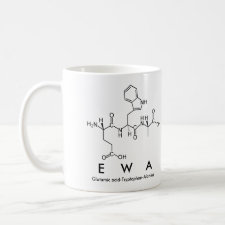
Authors: Mhaka B, Cukrowska E, Tse Sum Bui B, Ramström O, Haupt K, Tutu H, Chimuka L
Article Title: Selective extraction of triazine herbicides from food samples based on a combination of a liquid membrane and molecularly imprinted polymers.
Publication date: 2009
Journal: Journal of Chromatography A
Volume: 1216
Issue: (40)
Page numbers: 6796-6801.
DOI: 10.1016/j.chroma.2009.08.003
Alternative URL: http://www.sciencedirect.com/science/article/B6TG8-4WY6JXW-5/2/6d820912f90d6da0837bc0cfe899e94e
Abstract: A selective extraction technique based on the combination of liquid membrane (microporous membrane liquid-liquid extraction) and molecularly imprinted polymers (MIP) was applied to triazines herbicides in food samples. Simazine, atrazine and propazine were extracted from aqueous food samples through the hydrophobic porous membrane that was impregnated with toluene, which also formed part of the acceptor phase. In the acceptor phase, the compounds were re-extracted onto MIP particles. The extraction technique was optimised for the amount of molecularly imprinted polymers particles in the organic acceptor phase, extraction time, and type of organic acceptor solvent and desorption solvent. An extraction time of 90ámin and 50ámg of MIP were found to be optimum parameters. Toluene as the acceptor phase was found to give higher triazines binding onto MIP particles compared to hexane and combinations of diethyl ether and hexane. 90% methanol in water was found to be the best desorption solvent compared to acetonitrile, methanol and water. The selectivity of the technique was demonstrated by extracting spiked lettuce and apple extracts where clean chromatograms were obtained compared to liquid membrane extraction alone or to the microporous membrane liquid-liquid extraction - non-imprinted polymer combination. The MIP showed a certain degree of group specificity and the extraction efficiency in lettuce extract was 79% (0.72) for simazine, 98% (1.55) for atrazine and 86% (3.08) for propazine
Template and target information: simazine, atrazine, propazine
Author keywords: selective extraction, Combination of techniques, liquid membrane, molecular imprinted polymers, triazines



Join the Society for Molecular Imprinting

New items RSS feed
Sign-up for e-mail updates:
Choose between receiving an occasional newsletter or more frequent e-mail alerts.
Click here to go to the sign-up page.
Is your name elemental or peptidic? Enter your name and find out by clicking either of the buttons below!
Other products you may like:
 MIPdatabase
MIPdatabase









